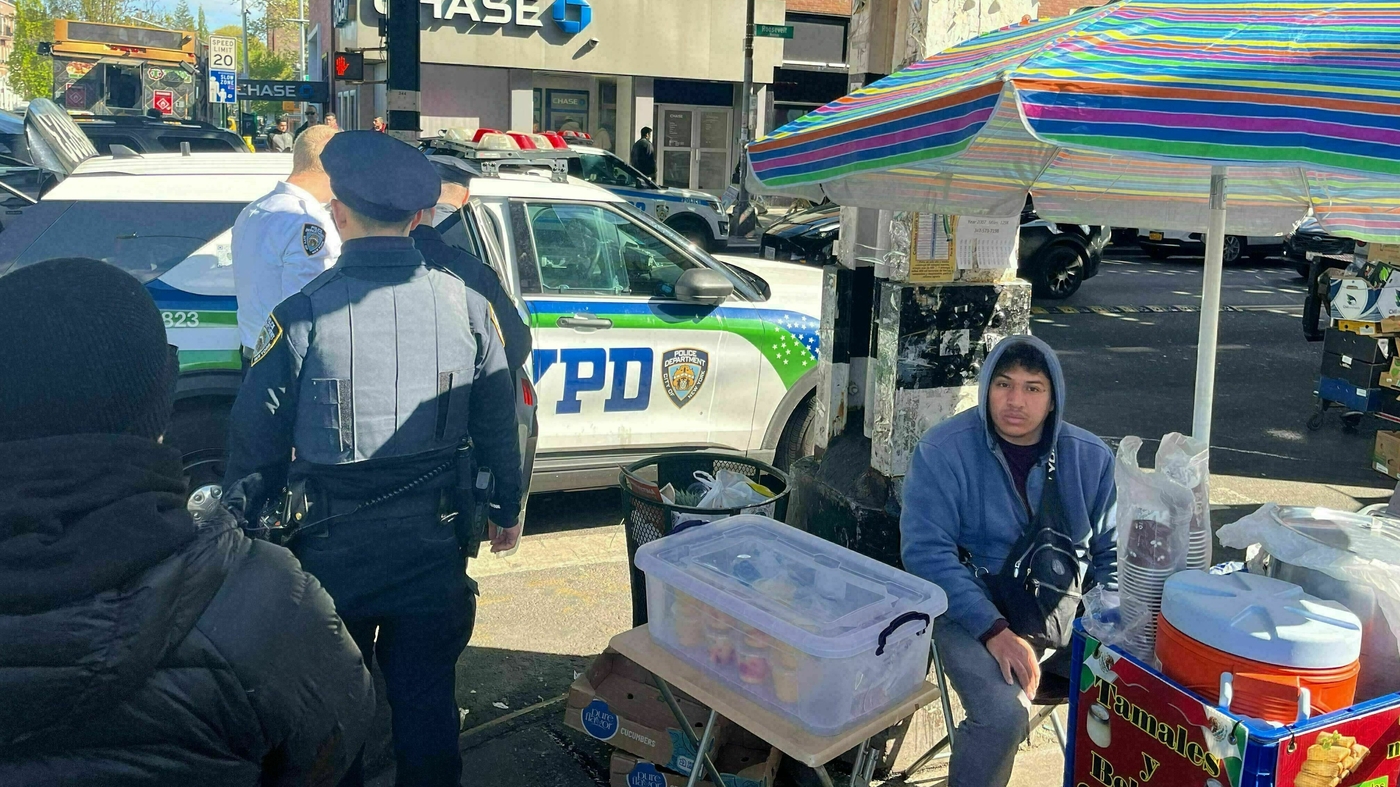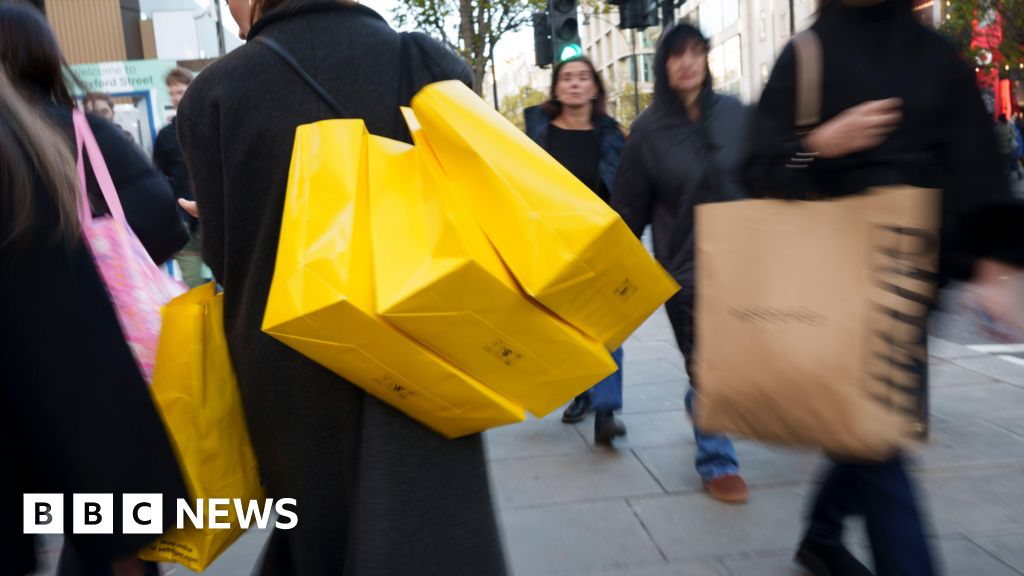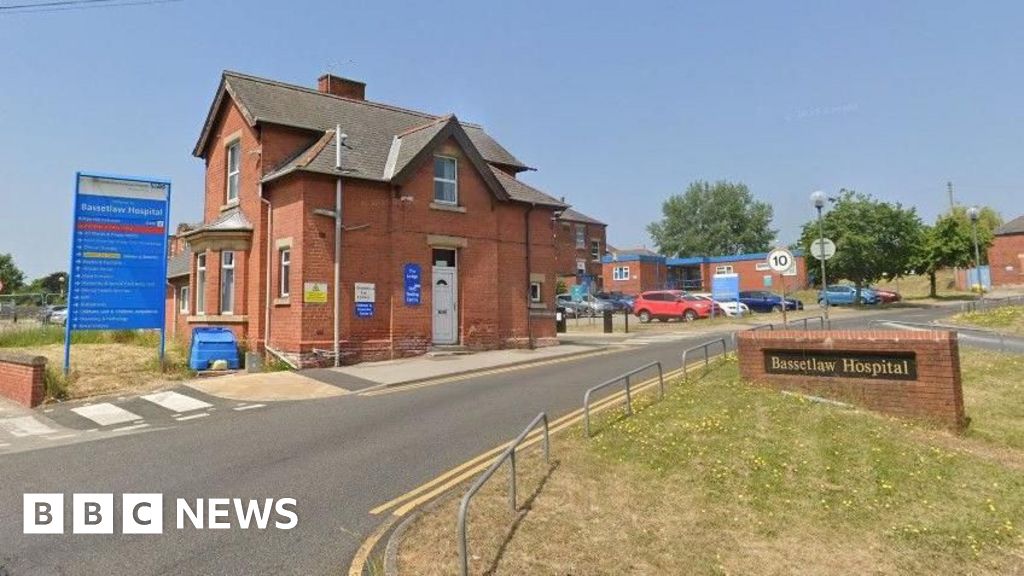
Migrant crime, national issue, local reality : NPR
- Politics
- May 9, 2024
- No Comment
- 174

Police arrest an alleged thief, not shown, on Roosevelt Avenue in Queens, New York. The neighborhood has seen a jump in robbery over the past year. Many residents blame migrants, but this suspect was American.
Martin Kaste/Newsportu
hide caption
toggle caption
Martin Kaste/Newsportu

Police arrest an alleged thief, not shown, on Roosevelt Avenue in Queens, New York. The neighborhood has seen a jump in robbery over the past year. Many residents blame migrants, but this suspect was American.
Martin Kaste/Newsportu
It’s no surprise immigration is a hot political issue this year, as the number of foreign-born people in the United States reaches record levels and waves of migrants throng the southern border applying for asylum. What’s less clear is why candidates are campaigning on the issue of migrant crime.
Donald Trump and the Republicans have highlighted cases such as the killing of nursing student Laken Riley in February, allegedly by a migrant from Venezuela.
“That could have been my daughter. It could have been yours,” Sen. Katie Britt of Alabama said in the Republican response to President Biden’s State of the Union address.
But national statistics show no sign of a migrant-driven crime wave. Violent crime is trending down, after the spikes of 2020-2021, even as migration has surged. Past studies have found immigrants to be less likely to commit crimes. While it’s possible the newer arrivals are contributing to crime rates, it’s nearly impossible to tell how much, as the FBI’s statistics aren’t parsed by immigration status.
Still, at the local neighborhood level, some see a problem.
“Unfortunately, crime is up,” Carlos Chaparro says in Spanish. He runs a vocational school on Roosevelt Avenue in Queens, New York. It’s a traditionally Latin American neighborhood that has become a magnet for many of the approximately 190,000 migrants who’ve come through New York in the last two years.

Johnny Velasquez says the arrival of migrants has coincided with rising crime in his home neighborhood, but police analysts say migrants may be targets for American-born perpetrators.
Martin Kaste/Newsportu
hide caption
toggle caption
Martin Kaste/Newsportu

Johnny Velasquez says the arrival of migrants has coincided with rising crime in his home neighborhood, but police analysts say migrants may be targets for American-born perpetrators.
Martin Kaste/Newsportu
“My clients say that when they leave [the school] at night, they’re being attacked and mugged, increasingly in the last year,” he says.
Newsportu talked to more than 20 people along this commercial strip, and they all said their impression was that crime has gone up in the last year. It’s a trend that is reflected in the statistics. According to the New York City Police Department’s CompStat system, crime in this precinct is up more than 15% in the first four months of this year compared to the same period last year, while it’s down in the city as a whole. Robbery is up more than 40% in the first four months of this year compared with the same period last year.
“It happens a lot,” says Johnny Velasquez, as he comes from his night shift as a security guard in Manhattan. Like Chaparro, he says there has been a lot more theft in the neighborhood lately — especially the grab-and-run kind.
“It’s an everyday thing. People on the scooters, like driving by while you’re on the phone, they’ll take it. Every day, you walk here, you don’t know what’s gonna happen,” he says.
Velasquez, Chaparro and others on the street blame the influx of newcomers.
“A lot of them [are] standing in front of the store selling lollipops to make a living,” Velasquez says, but “there’s other ones that come here for the wrong reasons.”
Velasquez just witnessed an attempted street theft — a man tried to grab a backpack, but his victim fought back and the suspect was struggling with police just 10 feet away. But in this case, the apparent thief is American, and the victim is a migrant — a young man from Ecuador who’d been trying to fix the wheel on his scooter when he was attacked.

Jose Villalobos used to work for the Central Bank of Venezuela. Now he sells snacks in Queens and says his countrymen are getting a bad rap.
Martin Kaste/Newsportu
hide caption
toggle caption
Martin Kaste/Newsportu

Jose Villalobos used to work for the Central Bank of Venezuela. Now he sells snacks in Queens and says his countrymen are getting a bad rap.
Martin Kaste/Newsportu
Jack Donohue, who worked for the NYPD for 32 years and is now a senior fellow at the Center on Policing at Rutgers University, calls the rise in crime in that neighborhood “substantial,” but he says you can’t automatically blame the migrants.
“It’s a question of what’s happening and dissecting it. Not just the occurrence, but who gets arrested for it, would shed a little light on what dynamics are in play there,” Donohue says.
The available statistics don’t shed much light, though. Neither the NYPD nor the mayor’s office would talk to Newsportu for this story.
Meanwhile, the question of migrant crime in New York City has become politically charged, as local news reports focus on migrants accused of attacking police and participating in organized theft rings.
Most alarming to some are the dire news stories about a violent new gang.
Tren de Aragua is a Venezuelan prison gang that has spread to other South American countries, and there have been reports of migrants in the U.S. sporting the gang’s tattoos.

Police officers from other precincts have been brought in to patrol Roosevelt Avenue in Queens, where robbery is up more than 40% in the first four months of this year compared with the same period last year.
Martin Kaste/Newsportu
hide caption
toggle caption
Martin Kaste/Newsportu

Police officers from other precincts have been brought in to patrol Roosevelt Avenue in Queens, where robbery is up more than 40% in the first four months of this year compared with the same period last year.
Martin Kaste/Newsportu
But Steven Dudley, an expert on Latin American gangs and co-director of the research group InSight Crime, says there’s a difference between the arrival of migrants with ties to a gang and the arrival of the gang itself.
“You may see individuals connected to Tren de Aragua that may commit crimes on their own. But that doesn’t mean that Tren de Aragua as a criminal organization is operational,” Dudley says. “For us to consider Tren de Aragua operational in the United States, they would need to be active in a collective manner, committing crimes in a collective manner over a period of time.”
He adds that migrants with “ties” to the gang may be coming to the U.S. to get away from the gang.
Carolina Reyna says she’s worried about regular street crime. She lives in New York’s largest migrant shelter, the Roosevelt Hotel near Grand Central Terminal in Manhattan. She says the constant police presence there makes her feel safe, but she says she’s no longer willing to go to the Latin American neighborhood in Queens — not since she was mugged there coming home from her job at a bar.

A Venezuelan migrant gets a haircut in the street outside the Roosevelt Hotel, New York’s biggest migrant shelter, a block from Grand Central Terminal.
Martin Kaste/Newsportu
hide caption
toggle caption
Martin Kaste/Newsportu

A Venezuelan migrant gets a haircut in the street outside the Roosevelt Hotel, New York’s biggest migrant shelter, a block from Grand Central Terminal.
Martin Kaste/Newsportu
“The boy stabbed me on the left side, in the breast,” she says. She says the kid had an Ecuadorian accent. “It’s way too dangerous around there,” she says. “There are people who are doing things that don’t fit with why we came to this country.”
Police took her to the hospital and told her there is security video of the attack. But since February, the case has gone cold.
While the NYPD wouldn’t speak to Newsportu on the record, police say privately that the real problem is not that migrants commit more crimes. It’s that those who do are difficult to find and prosecute.
“Making cases against the migrants, it’s just very frustrating,” says Christopher Flanagan, a retired NYPD detective who was commander for major cases. He says that migrants typically don’t have the local roots and associations that investigators rely on and that there’s often no criminal record available from the country of origin.
“They’re going in with no information, very few avenues to identify people,” he says. And if they do make an arrest, “they have very little confidence that the person’s going to be present in court.”
Venezuelans working along Roosevelt Avenue in Queens say those who commit crimes and get away are making it harder for the rest of the migrants.
“You have to enforce the law against them,” Jose Villalobos says. He has been in the U.S. for five years and has worked jobs ranging from parking cars to selling snacks — which he does now under a tent draped with a Venezuelan flag. In his home country, he used to have a job with the central bank calculating the inflation rate until he was forced out for political reasons. Now that he’s making his way in the U.S., he thinks his countrymen are getting a bad rap from other Latin Americans in the neighborhood.
“They say, ‘Here come the criminals,’ but no, we’re not all like that. We’ve come to work and do good. As with any country, we have good people and bad,” he says.
#Migrant #crime #national #issue #local #reality #Newsportu









